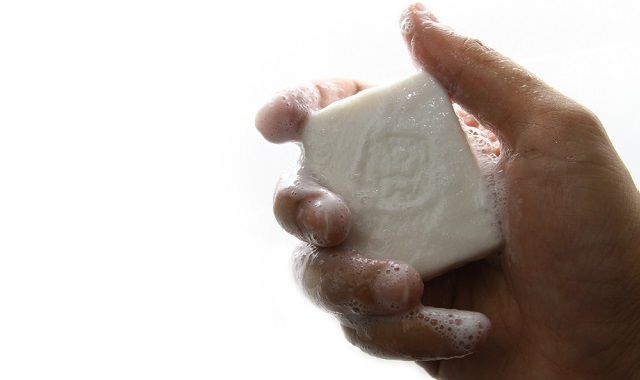- General Dermatology
- Eczema
- Chronic Hand Eczema
- Alopecia
- Aesthetics
- Vitiligo
- COVID-19
- Actinic Keratosis
- Precision Medicine and Biologics
- Rare Disease
- Wound Care
- Rosacea
- Psoriasis
- Psoriatic Arthritis
- Atopic Dermatitis
- Melasma
- NP and PA
- Skin Cancer
- Hidradenitis Suppurativa
- Drug Watch
- Pigmentary Disorders
- Acne
- Pediatric Dermatology
- Practice Management
- Prurigo Nodularis
Article
Comprehending cleanser development
Soap has probably done more to improve world health than any prescription medication, says Dr. Zoe Diana Draelos in her monthly Dermatology Times column, "Cosmetic Conundrums."

(Taffpixture/Shutterstock.com)Q. How was soap developed?

Zoe Diana Draelos, M.D.Soap has probably done more to improve world health than any prescription medication. The Sumerians are credited with inventing the first soap composed of burnt wood ash, known as potash, and animal fat, the source of triglycerides in 2500 B.C. It was not until the early 1900s that commercial soap was widely sold and purchased. Soap was a major U.S. import from Italy and France until 1878 when Harley Procter converted his father’s candle factory into a soap factory. He teamed with his chemist cousin James Gamble who accidentally over stirred the soap subsequently discovering that whipping air into the solution prior to molding resulted in a floating bar. Since most Americans bathed outdoors in public waterways, a soap that would float was an immediate commercial success.
Q What is cold cream?
Early soaps possessed a high alkaline pH and left precipitated soap scum on the body when used with hard water. The soap possessed high detergency and the residual scum was irritating, creating a void for a facial cleanser that left skin smooth and soft. Theron T. Pond invented the first product that met these needs in 1846. Known as cold cream, a product that still bears his name today.
Cold cream is composed of water, beeswax, and mineral oil and works by solubilizing lipophilic or oily skin dirt. The beeswax and mineral oil function as lipid solvents that combine with the detergent action of borax, also known as decahydrate of sodium tetraborate, to cleanse the face. The formulation also contains ceresin and carbomer to thicken the cream and fragrance. It is wiped on the face with the fingers and may be rinsed, wiped of with a tissue, or left on the face. This same formulation is still sold and is an excellent cleanser and cosmetic remover for patients with dry skin.
Q How are transparent bars made?
Transparent soap, also known as a glycerin bar, was developed in 1789 by Andrew Pears. These were composed of sodium palmitate, glycerin, and soap dissolved in alcohol. The mixture was poured into molds and cured for three months.
Belgian Edmond Fromont improved upon this original formulation in 1955 by substituting triethanolamine stearate for the sodium palmitate.
This substitution lowered the pH to 8-9, which improved mildness. This same bar is sold today (Neutrogena Bar, Johnson & Johnson).
Q. Why were nonfoaming cleansers developed?
Despite many developments in cleansing, mildness remained a challenge. Cleansers simply cannot distinguish between oily skin soils requiring removal for good hygiene and the intercellular lipids required for optimal skin barrier function.
Thus, soaps may damage the intercellular lipids, especially in individuals with skin disease, magnifying the barrier defects while promoting skin hygiene. Nonfoaming cleansers are composed of water, glycerin, cetyl alcohol, stearyl alcohol, sodium lauryl sulfate and occasionally propylene glycol.
Sodium lauryl sulfate (SLS) is the cleansing agent. It is a synthetic detergent with amphoteric properties able to bind both water soluble and lipid soluble skin soils. SLS is used as the positive control for irritant contact dermatitis, but is used in lower concentration in these cleansers. Mildness is conferred to the formulation through the inclusion of glycerin, cetyl alcohol, and stearyl alcohol, which leave behind a thin moisturizing film on the skin. Non-foaming cleansers effectively remove cosmetics and cause less skin dryness.





